Frequently Asked Questions
This is where you will find most answers. If there should still be any questions left, don’t hesitate to contact us.
NATURAL STONE
“Natural Stone” refers to a number of products quarried from the earth, used over many thousands of years as building materials and decorative enhancements. These products include Granite, Marble, Limestone, Travertine, Slate, Quartzite, Sandstone, Adoquin, Onyx, and others. They are more than just rocks – natural stone is hand selected from the best, most consistent sources for durability and beauty.
Natural stone products differ in composition, color, and texture even among pieces from the same source. This is usually considered a benefit, lending itself to one of a kind designs and distinctive, dramatic applications.
In past eras, Natural Stone has mainly been used for large-scale construction and in formal applications such as churches and government buildings. It has also been used for road construction and monuments. For residential construction, wood and brick have been the traditional choice. However, there has been a growing trend in recent years to use Natural Stone in residential construction for both structural and decorative use. Popular applications include entryways, atriums, bathrooms, fireplaces, floors, countertops, and many other surfaces.
Natural stone is prized its distinctive beauty and the sense of peaceful tranquility it creates, but there are also many practical benefits to using Natural Stone in your home. Natural Stone products are more durable than many artificial products, often lasting for decades with very little maintenance. With Natural Stone there are no worries about exposure to harmful chemicals in the home or released into the environment during production or disposal. Why invest time and money into a look-alike? Natural Stone is the real thing that the artificial products try to emulate.
Natural Stone products include Granite, Marble, Limestone, Travertine, Slate, Quartzite, Sandstone and Onyx.
Granite
For maintenance-free elegance and durability, granite is unmatched. Its incredible strength and density makes granite the perfect choice for massive structural work – walls, monuments and supports. Though it is the hardest of structural stones, the amazing variety of mineral-rich colors and natural patterns gives it ornamental value as well. Granite products are ideal for flooring, countertops, vanities and decorative exterior applications.
Marble
Prized for its timeless style, texture and high-gloss polish along with a rich palette of beautiful colors, marble has a place anywhere in the home. Available in solids or dramatic veined varieties, marble may be carved or sculpted in many ways, making it one of the most versatile decorative stones. Often seen as a symbol of luxury, modern technology brings beautiful marble products even to budget-conscious homeowners.
Serpentine Marble
Also referred to as Verde Antique, Serpentine Marble is a dramatic green color with strong white veining.
Slate
Formed over thousands of years of sedimentary deposit and compression, slate splits naturally into beautifully textured layers. The various shades of slate products – brown, yellow, dark gray, pink, lavender and more – may even occur within the same piece of stone. Durable and stain-resistant, slate products are often used for flooring, cladding and landscaping.
Quartz
Shimmering and sparkling with tiny quartz crystals, Quartz is a rock similar to slate with a medium grained texture and incredible durability. Differing mineral content creates many color variations, from the sedate white, gray or beige to more adventurous shades of purple and pink. Quartzite is widely used for wall veneers and decorative tiles. A naturally non-skid texture makes it a perfect candidate for flooring indoors and out, including areas with heavy traffic and exposure to the elements.
Sandstone
With a uniform texture, an appealing variety of colors and finishes, and weather resistant durability, it’s easy to see why sandstone products have been used for thousands of years for walls, floors, and pavers. As with other types of rock, its variations result from differing mineral composition – there’s a sandstone product to match any décor.
Limestone
The muted, soft tones of limestone are perfect for today’s casual and comfortable lifestyles. Available in hues of soft beige and tan, either polished or honed, limestone products are ideal for bathrooms, fireplaces, countertops and flooring in low-traffic, informal areas.
Travertine
Valued for its banded, pitted “distressed” appearance, travertine adds rich, distinctive character to a variety of indoor and outdoor building projects. Its patterns and veining effects were formed by hot spring water percolating through underground limestone. When used for interior applications, travertine is often filled with cement, grout or resin and sealed to create a smooth, stain-resistant surface.
Shell Stone
Shell Stone is a sedimentary stone similar to limestone, with many small shells embedded and visible upon its surface.
Onyx
A translucent stone with a glossy, polished surface, onyx is composed of crystalline silica and closely related to agate, a semi-precious stone. Often found in caves, onyx is formed by the slow flow of cold, carbonated spring water. Onyx is available in pastel shades of yellow, brown, green, orange, and white.
Cantera Stone
Cantera is a sedimentary stone that comes from the riverbeds of Mexico. It is used extensively for architectural columns, moldings, and for pavement tiles.
The most important difference is this – Natural Stone is a product of nature, and Ceramics are man-made. Most man-made materials cannot compare in durability to natural ones. While damaged ceramic tiles usually need replacing, natural stone usually needs minimal restoration if stained or scratched.
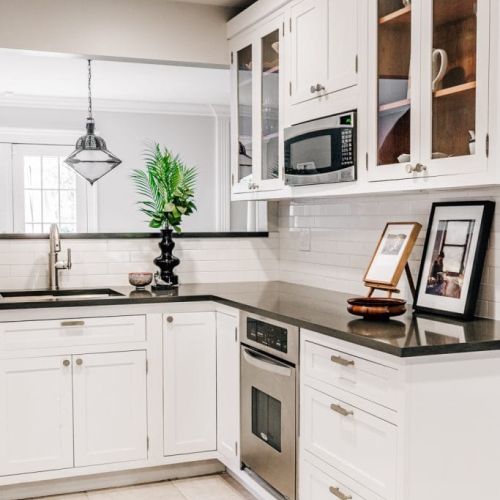
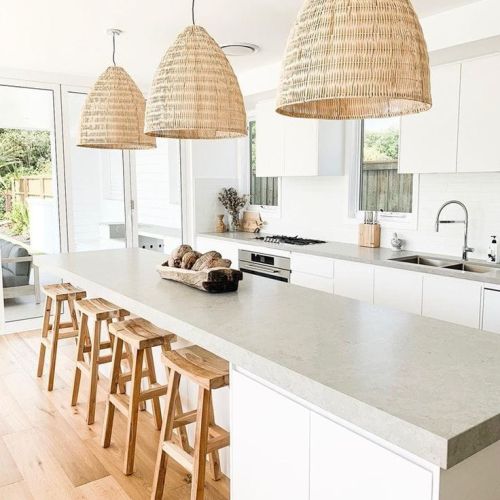
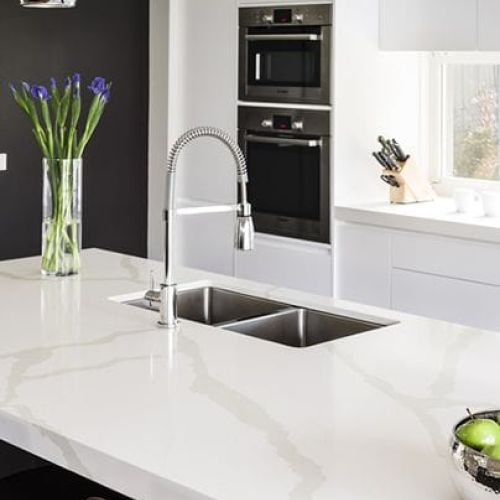

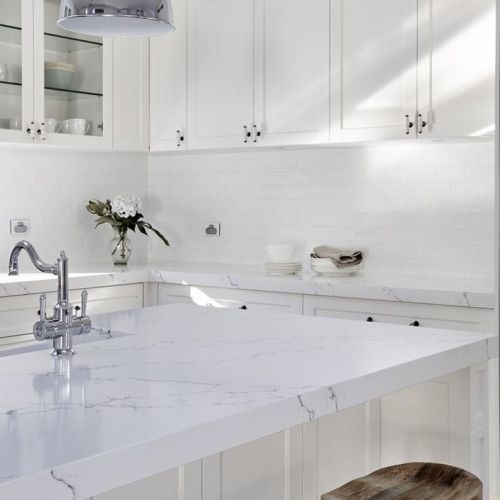

COST OF STONE
Stones that are harder and denser are more difficult and expensive to quarry and process. Quarrying methods vary as well; stones may be quarried below ground, which is more expensive than above ground. Also, since natural stone is quarried all over the world, long distance shipping factors into the price.
The larger the stone, the more difficult it is to process, handle, pack, and transport. Larger sizes also tend to have a higher amount of waste compared to the part that is used, which makes them more expensive.
The availability of a particular stone is the most important factor in determining price. However, handling and transportation cost does drop slightly for a larger quantity.
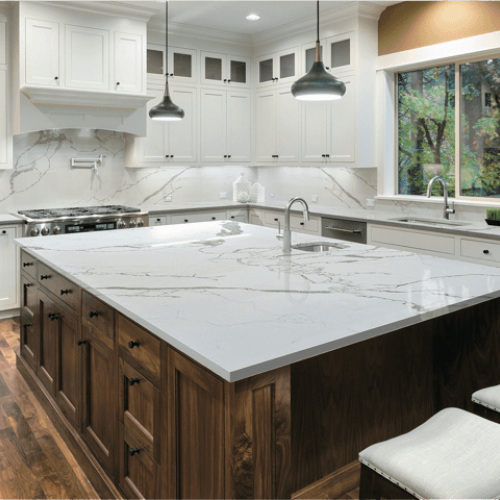
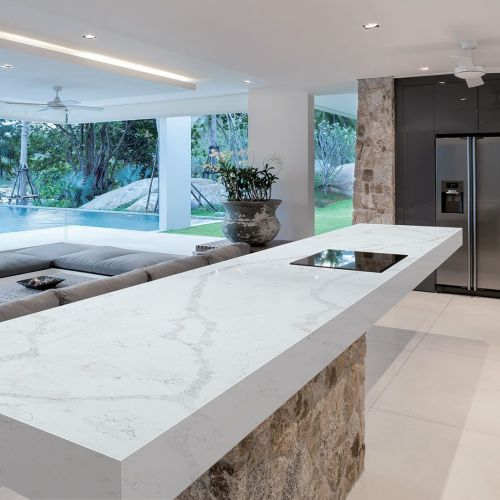
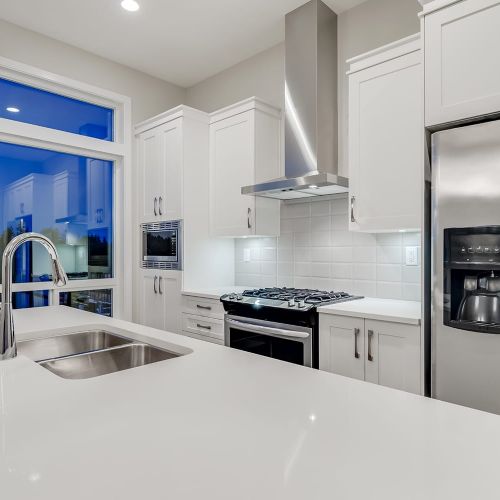
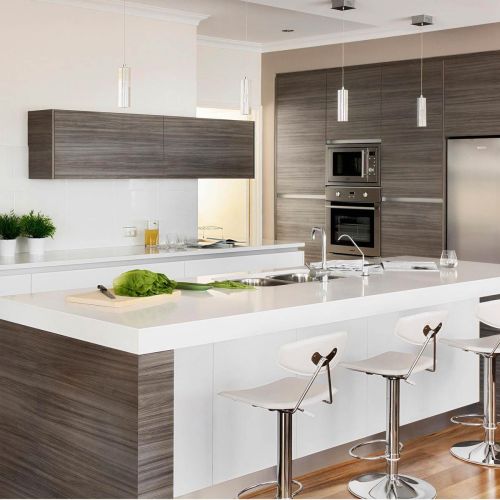


STONE TILE INSTALLATION
Creating an installation without visible grout joints is difficult, but if the surface of the floor is straight and the tiles are perfectly cut, very little grout should be seen. A professional, experienced installer should be chosen to create this look.
The tightest grout joint that you may request is 1/16″.
Because stone is a natural product, there is always some variation within a selection. By sorting out the stone tiles before installing, it is possible to place the tiles on the surface before installing, blending the varying colors, grain, and veining as desired.
- Open all boxes and mix up all of the pieces before installation. This will help to create a visually pleasing distribution of stone variation.
- A good installer knows that green marble and some other stones require water-free epoxy thin-set.
- When stone is installed on a concrete slab at ground level, ensure that a proper moisture barrier is in place prior to installation.


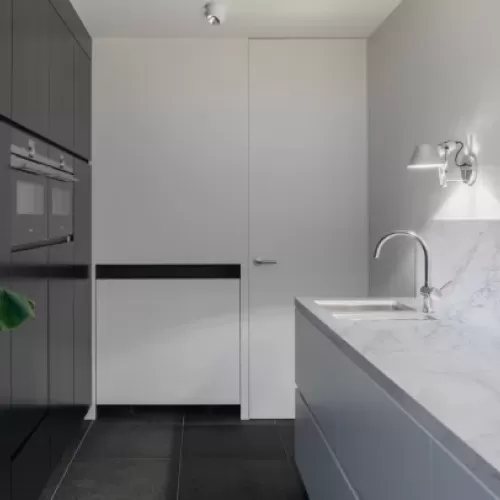



StoneX USA – Granite Products
Alaska Blue Polished
Immerse yourself in the cool and calming beauty of blue and gray tones with Alaska Blue Polished Granite. Its captivating blend of colors adds a touch of serenity and elegance to your space.
Alaska White Polished
Bring a sense of purity and sophistication to your interior with Alaska White Polished Granite. Its pristine white background and subtle gray veining create a timeless and elegant atmosphere.
Alpinus (Alpine White) Polished
Elevate your space with the pristine beauty of Alpinus Polished Granite. Its white background, accompanied by delicate gray veining, exudes a harmonious and luxurious ambiance.
Alpinus (Alpine White) Premium Polished
Indulge in the luxurious beauty of Alpinus Premium Polished Granite. Its enhanced white background, adorned with intricate gray veining, adds depth and elegance to any design.
Antarctic White Polished
Discover the captivating allure of Antarctic White Polished Granite. Its delicate blend of white and gray tones creates a tranquil and sophisticated atmosphere.
Arabesco/Dallas White Leathered
Embrace the modern and textured charm of Arabesco/Dallas White Leathered Granite. Its textured surface adds depth and character to the white background with delicate gray veining, making it perfect for contemporary designs.
Arabesco/Dallas White Polished
Create a timeless and elegant space with Arabesco/Dallas White Polished Granite. Its polished surface accentuates the white background and intricate gray veining, adding a touch of luxury to your interior.
Arandis White Polished
Experience the serene beauty of Arandis White Polished Granite. Its white background, accompanied by subtle gray and beige veining, creates a soothing and inviting ambiance.
Arara Blue Polished
Make a statement with the captivating Arara Blue Polished Granite. Its mesmerizing blend of blue and gray tones adds a touch of drama and sophistication to any design.
Arctic White Polished
Transform your space with the timeless elegance of Arctic White Polished Granite. Its pristine white background creates a bright and refreshing atmosphere.
Ash Gold Polished
Add warmth and richness to your interior with Ash Gold Polished Granite. Its golden background, adorned with dark brown and black speckles, creates a luxurious and inviting ambiance.
Ashland Leather
Embrace the modern and textured appeal of Ashland Leather Granite. Its textured surface adds depth and character to the gray background with hints of white and black, making it a versatile choice for contemporary designs.
Aspen White Polished
Elevate your space with the timeless beauty of Aspen White Polished Granite. Its white background, adorned with delicate gray and beige veining, creates a serene and sophisticated atmosphere.
Aspen White Premium Dual (Polished & Leathered)
Experience the versatility of polished and leathered Aspen White Premium Granite. Its smooth and textured surfaces offer a sleek and contemporary look, perfect for adding visual interest to your design.
Azul Platino Polished
Discover the captivating beauty of Azul Platino Polished Granite. Its stunning blend of gray and blue tones creates a sophisticated and eye-catching ambiance.
Azul White Leathered
Embrace the textured charm of Azul White Leathered Granite. Its textured surface adds depth and character to the white background with delicate gray veining, making it an ideal choice for modern and rustic designs.
Azul White Polished
Create a serene and elegant space with Azul White Polished Granite. Its polished surface accentuates the white background and subtle gray veining, adding a touch of sophistication to your interior.
Bahamas Polished
Experience the tropical charm of Bahamas Polished Granite. Its warm beige and brown tones evoke the beauty of sandy beaches and clear blue waters.
Barocco Leather
Embrace the intricate beauty of Barocco Leather Granite. Its textured surface enhances the unique patterns and colors, ranging from warm earth tones to dark browns, creating a visually stunning and textured surface.
Barocco Polished
Elevate your space with the timeless elegance of Barocco Polished Granite. Its polished surface showcases a stunning blend of cream, brown, and gold tones, creating a luxurious and sophisticated ambiance.
Bianco Antico Polished
Create an atmosphere of timeless elegance with Bianco Antico Polished Granite. Its polished surface showcases a beautiful blend of cream, gray, and brown tones, adding sophistication and warmth to any space.
Bianco Frost Polished
Embrace the delicate beauty of Bianco Frost Polished Granite. Its polished surface features a white background with subtle gray veining, creating a serene and luxurious ambiance.
Bianco Primata Polished
Elevate your interior with the classic charm of Bianco Primata Polished Granite. Its polished surface showcases a white background with intricate gray veining, adding elegance and character to your design.
Black Forest Dual (Polished & Leathered)
Experience the versatility of Black Forest Dual Granite with its polished and leathered surfaces. Its combination of a smooth, glossy finish and a textured, rustic look creates a striking contrast, making it a unique choice for any style.
Black Galaxy Polished
Make a statement with the mesmerizing beauty of Black Galaxy Polished Granite. Its polished surface features a deep black background adorned with speckles of golden and silver flecks, creating a celestial and luxurious ambiance.
Black Ice Leathered
Embrace the contemporary allure of Black Ice Leathered Granite. Its leathered finish adds texture and depth to the black background, with subtle white veining, making it a sleek and sophisticated choice for modern designs.
Black Mist Honed
Create a refined and elegant space with Black Mist Honed Granite. Its honed finish enhances the dark gray background, adding a smooth and velvety texture that complements a variety of design styles.
Black Mist Leathered
Experience the modern sophistication of Black Mist Leathered Granite. Its leathered finish adds depth and character to the dark gray background, creating a textured and contemporary look that exudes style and uniqueness.
Black Pearl Leather
Indulge in the luxurious beauty of Black Pearl Leather Granite. Its leathered finish enhances the black background, showcasing a subtle play of iridescent silver and gray tones, creating a captivating and glamorous atmosphere.
Black Pearl Polished
Elevate your design with the timeless elegance of Black Pearl Polished Granite. Its polished surface features a deep black background adorned with shimmering silver and gray flecks, adding a touch of opulence and sophistication to any space.
Blue Bahia Polished
Immerse yourself in the exotic allure of Blue Bahia Polished Granite. Its polished surface showcases a mesmerizing blend of blue hues, reminiscent of tropical waters, creating a luxurious and vibrant ambiance.
Blue Dream Polished
Create a dreamy and enchanting space with Blue Dream Polished Granite. Its polished surface features a captivating mix of blue, gray, and white tones, evoking a sense of tranquility and serenity.
Blue Dunes Leathered
Embrace the coastal charm of Blue Dunes Leathered Granite. Its leathered finish adds texture and depth to the blue-gray background, capturing the essence of sandy beaches and ocean waves, perfect for creating a relaxed and inviting atmosphere.
Blue Dunes Polished
Experience the serene beauty of Blue Dunes Polished Granite. Its polished surface showcases a harmonious blend of blue and gray tones, creating a peaceful and soothing ambiance that echoes the colors of the sea and sky.
Blue Night Polished
Make a bold statement with the captivating beauty of Blue Night Polished Granite. Its polished surface features a deep blue background, accentuated by subtle black and gray veins, creating a dramatic and luxurious atmosphere.
Blue Nile Polished
Immerse yourself in the enchanting allure of Blue Nile Polished Granite. Its polished surface showcases a rich blue background with hints of gray and white veining, adding depth and sophistication to any design.
Blue Pearl Gt Polished
Elevate your interior with the mesmerizing beauty of Blue Pearl GT Polished Granite. Its polished surface features a deep blue background adorned with shimmering silver and gray crystals, creating a luxurious and eye-catching ambiance.
Brown Silk Polished
Create an atmosphere of warmth and elegance with Brown Silk Polished Granite. Its polished surface showcases a rich brown background with delicate beige veining, adding a touch of sophistication and luxury to your space.
Caramelato Polished
Indulge in the golden beauty of Caramelato Polished Granite. Its polished surface features a warm caramel background adorned with intricate brown and black veining, creating a luxurious and inviting atmosphere.
Coliseu Polished
Experience the grandeur of Coliseu Polished Granite. Its polished surface showcases a stunning blend of gold, brown, and gray tones, reminiscent of ancient Roman architecture, adding a sense of opulence and majesty to your space.
Colonial White Polished
Create a classic and refined atmosphere with Colonial White Polished Granite. Its polished surface features a beautiful blend of white and gray tones, adding a touch of elegance and grace to your space.
Copacabana Leathered
Experience the luxurious beauty of Copacabana Leathered Granite. Its leathered finish adds texture and depth to the gray background, creating a modern and sophisticated look.
Copacabana Polished
Elevate your space with the timeless elegance of Copacabana Polished Granite. Its polished surface showcases a stunning blend of cream, gray, and brown tones, creating a sophisticated and inviting atmosphere.
Cosmic Black Polished
Create a bold and dramatic statement with the Cosmic Black Polished Granite. Its polished surface features a deep black background adorned with shimmering silver and gold speckles, adding a touch of glamour to any space.
Crema Bordeaux Polished
Indulge in the rich and captivating beauty of Crema Bordeaux Polished Granite. Its polished surface showcases warm burgundy and brown tones, creating a luxurious and inviting ambiance.
Cullinan Crystal Polished
Elevate your space with the mesmerizing beauty of Cullinan Crystal Polished Granite. Its polished surface features a white background adorned with intricate gray and black veining, adding a touch of elegance and sophistication to any design.
Cygnus (Brown Silk) Leathered
Embrace the modern and textured appeal of Cygnus (Brown Silk) Leathered Granite. Its leathered finish adds depth and character to the brown background, creating a contemporary and stylish look.
Cygnus Black (Brown Silk) Leather
Experience the bold and captivating beauty of Cygnus Black (Brown Silk) Leather Granite. Its leathered finish adds texture and depth to the black background, creating a modern and stylish look with a touch of luxury.
Dalia White Polished
Discover the captivating beauty of Dalia White Polished Granite. Its polished surface showcases a pristine white background with delicate gray veining, creating a serene and elegant atmosphere.
Delicatus Polished
Create an atmosphere of refined elegance with Delicatus Polished Granite. Its polished surface features a white background adorned with intricate gray and black patterns, adding depth and sophistication to your space.
Dolomiti Polished
Elevate your interior with the timeless beauty of Dolomiti Polished Granite. Its polished surface showcases a stunning blend of gray and beige tones, creating a harmonious and inviting ambiance.
Extreme White Leathered
Experience the striking beauty of Extreme White Leathered Granite. Its leathered finish adds texture and depth to the white background, creating a contemporary and chic look.
Galaxy White Polished
Embrace the captivating beauty of Galaxy White Polished Granite. Its polished surface features a white background adorned with delicate gray veining, creating a bright and luxurious atmosphere.
Giallo Farfalla Polished
Elevate your design with the warm and inviting Giallo Farfalla Polished Granite. Its polished surface showcases a golden background with intricate patterns of black and brown, adding richness and depth to your space.
Giallo Verona Polished
Create an atmosphere of timeless elegance with Giallo Verona Polished Granite. Its polished surface features a warm golden background adorned with dark brown and black veining, adding a touch of sophistication and luxury to any design.
Golden Marakesh Polished
Indulge in the opulent beauty of Golden Marakesh Polished Granite. Its polished surface showcases a golden background adorned with intricate patterns of dark brown, adding a touch of luxury and grandeur to your space.
Golden Persa Polished
Elevate your interior with the captivating beauty of Golden Persa Polished Granite. Its polished surface features a golden background adorned with delicate gray veining, creating a luxurious and inviting ambiance.
Golden Thunder Polished
Experience the breathtaking beauty of Golden Thunder Polished Granite. Its polished surface showcases a stunning combination of gold, gray, and brown tones, adding warmth and elegance to any space.
Laguna Black Polished
Embrace the sleek and sophisticated charm of Laguna Black Polished Granite. Its polished surface features a deep black background, creating a modern and luxurious atmosphere.
Lennon Leather
Elevate your space with the timeless beauty of Lennon Leather Granite. Its leathered finish adds depth and character to the white and gray background, creating a stylish and contemporary look.
Lennon Polished
Discover the captivating beauty of Lennon Polished Granite. Its polished surface showcases a white background with intricate patterns of gray and black, adding elegance and sophistication to any design.
Magma Gold Polished
Experience the warm and inviting beauty of Magma Gold Polished Granite. Its polished surface features a golden background adorned with rich patterns of brown and black, adding depth and richness to your space.
Magma Prime Brushed
Experience the majestic beauty of Magma Prime Brushed Granite. Its brushed finish showcases a stunning combination of black, gray, and gold tones, creating a luxurious and sophisticated ambiance.
Mandala Black Polished
Embrace the sleek and modern appeal of Mandala Black Polished Granite. Its polished surface features a deep black background, adding a touch of elegance and sophistication to your interior.
Maori Leathered
Create an atmosphere of natural beauty with Maori Leathered Granite. Its leathered finish adds texture and depth to the gray background, creating a rustic and inviting look.
Maori Polished
Elevate your design with the captivating beauty of Maori Polished Granite. Its polished surface showcases a stunning blend of brown, gray, and black tones, creating a warm and inviting ambiance.
Mokon Brown Polished
Experience the luxurious beauty of Mokon Brown Polished Granite. Its polished surface features a rich brown background with intricate patterns of black and gray, adding depth and elegance to your space.
Moon White Dual (Polished & Leathered)
Embrace the contemporary charm of Moon White Dual Granite with its polished and leathered surfaces. Its combination of a smooth, glossy finish and a textured, rustic look creates a striking contrast, perfect for adding visual interest to your design.
Mystic Gray Honed
Create a serene and elegant space with Mystic Gray Honed Granite. Its honed finish enhances the gray background, creating a smooth and velvety surface that exudes sophistication and tranquility.
Mystic Gray Leathered
Elevate your interior with the modern beauty of Mystic Gray Leathered Granite. Its leathered finish adds texture and depth to the gray background, creating a contemporary and stylish look.
Mystic Gray Polished
Experience the timeless beauty of Mystic Gray Polished Granite. Its polished surface showcases a harmonious blend of gray tones, creating a serene and sophisticated atmosphere.
Napolitto Polished
Indulge in the natural beauty of Napolitto Polished Granite. Its polished surface features a warm beige background with intricate patterns of brown and gray, adding warmth and elegance to your space.
Navagio Polished
Elevate your space with the captivating beauty of Navagio Polished Granite. Its polished surface showcases a stunning combination of gray and brown tones, creating a luxurious and inviting ambiance.
Negresco Honed
Embrace the refined charm of Negresco Honed Granite. Its honed finish enhances the gray background, adding a smooth and velvety texture that exudes elegance and sophistication.
Got Questions?
-
Schedule An Appointment
-
Get Expert Advice
-
Pick From Extensive Selections